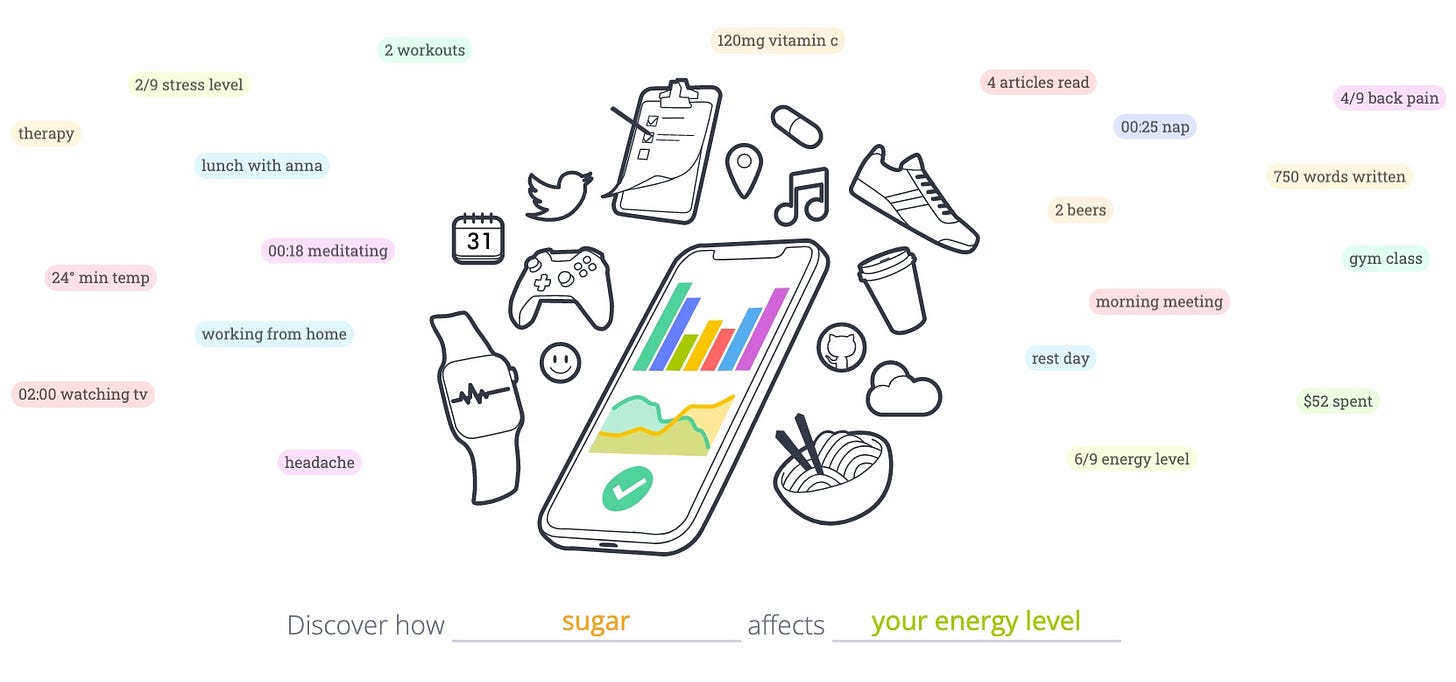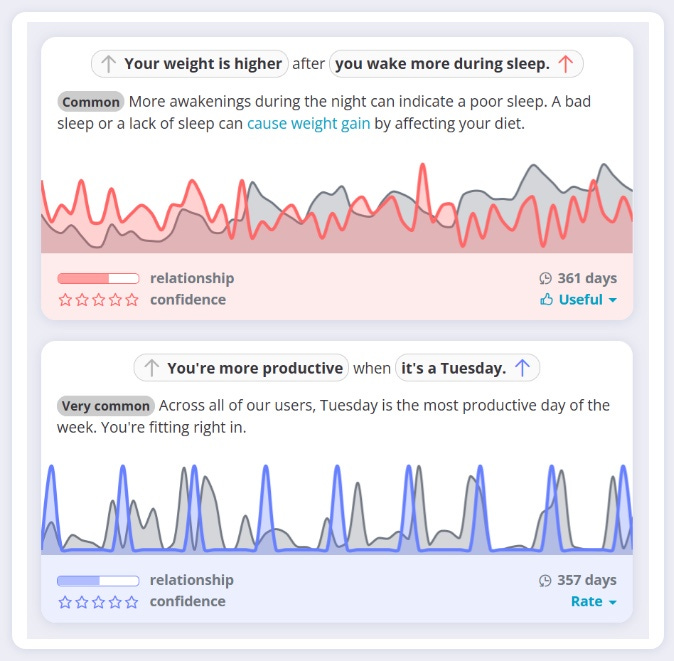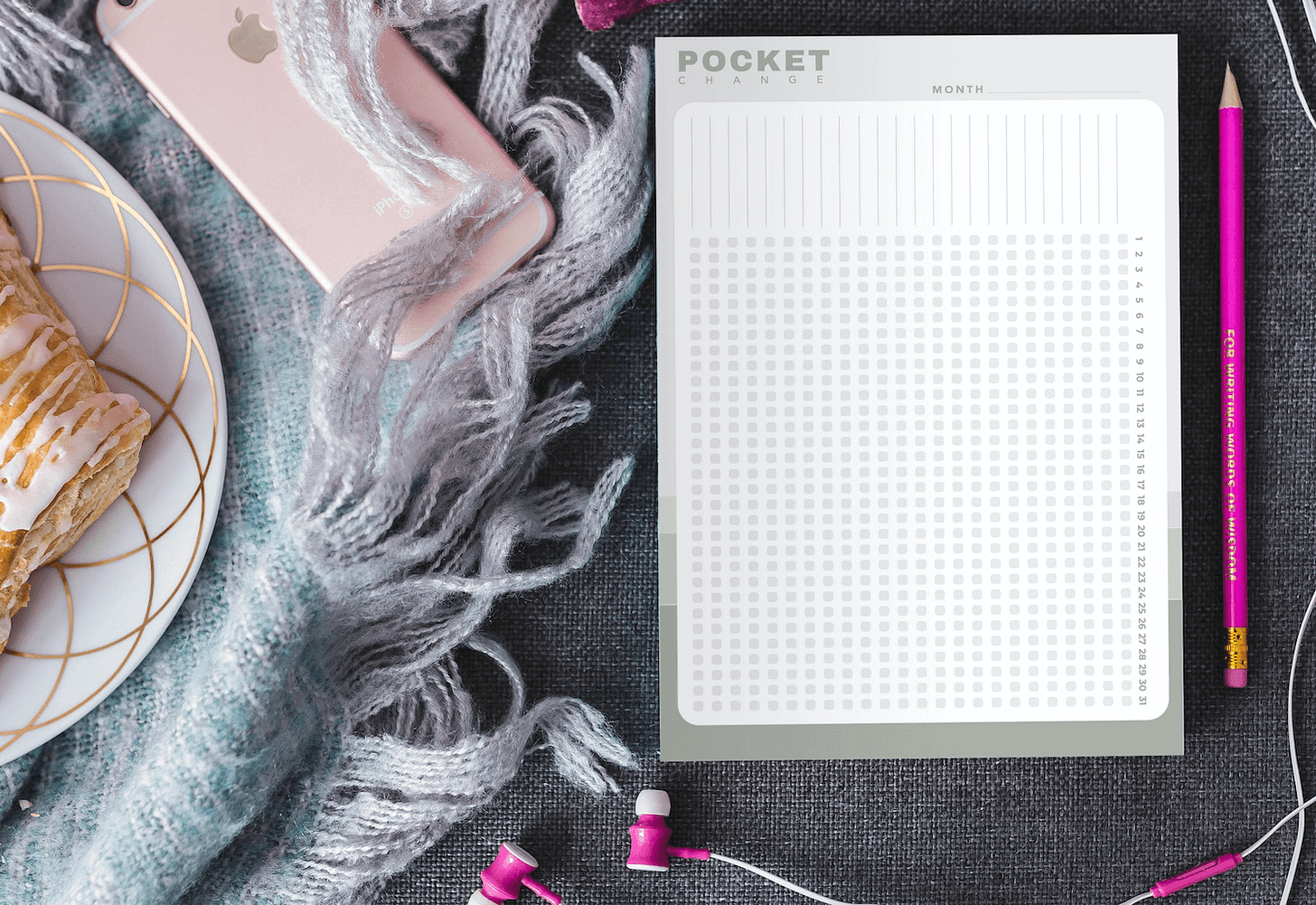Connecting The Dots: A Powerful Method for Using Data to Master Your Health
In the United States, 21% of adults use a smartwatch or fitness tracker. That’s roughly 70 million people. Now I won’t get into the fact that most of these people have higher levels of education and are higher up the socioeconomic ladder. That’s a story for another day. My focus today is on the technology being used and the fact that millions of people in the US alone have the capability of tracking many basic health behaviors and health metrics. Activity and stress levels, amount of sleep, and heart rate are among the most common. If you add to this the 85% of Americans who own a smartphone and have access to countless health apps that allow them to track a variety of additional behaviors, you get a population inundated with a litany of data that they often don’t know what to do with.
That’s not to say there aren’t any benefits to tracking our health. Doing so can heighten our health awareness, prompt us to take action, and even motivate us to change. But much of this is contingent on us looking at and interpreting data. And if we don’t know how to interpret and leverage that data to make informed decisions about our health, then we suddenly have a smartwatch that’s, well, just a watch. Or a tracker that never gets charged or health apps that get deleted or go unused. And we know this happens because studies have shown that 30-70% of users stop using these devices to track their health after only a few months. And results from a survey conducted by researchers at NYU Langone Medical Center showed nearly 50% of people who downloaded a health app stopped using it entirely. And yet these various trackers and apps continue to push us the same data they have for years instead of trying to help us make sense of it.
And one of the issues with the data that is shown to us is that we tend to fixate on the numbers. We measure our self-worth against the numbers we see or use the numbers as an excuse to ignore our own bodies — working out when we’re feeling worn down because hey, “I gotta get my steps,” or bailing because we don’t think we can reach our goal (“I’m never gonna hit 10,000 steps so forget it…where are those M&M’s? And what’s new on Netflix?).
So what can we do?
Discovering a new perspective on health
First, we need to at least momentarily get away from viewing our health as a number we have to reach and understand that all our health behaviors intersect in some way with each other and with different aspects of our health in general. And these intersections are where potential answers to our problems exist. It’s where sleep impacts our mood, caffeine affects our anxiety, and sunshine influences our stress. We’re talking about correlations here, not cause and effect — let’s be clear on that. But the act of connecting the dots helps us better understand our health and see things that could easily be overlooked or thought of as mere coincidence.
For the longest time, my wife struggled with sleeping through the night, but occasionally she would get a solid night’s rest. She could never explain exactly why, which naturally added to her frustration. Sometimes she thought it was related to looking at her phone before bed, what time she went to sleep, or how tired she was when the lights went out. Her continuous lack of quality sleep affected her daily mood and energy levels. It was as if she was riding this awful roller coaster she couldn’t get off. It was pulling her in every direction, playing with her emotions, and she had no control over it. She felt powerless about her own health.
But then one brisk, winter night we left the window open a bit and the temperature inside the room dropped to an uncomfortably cold level. You knew it was cold because the dog was wound tight like a fresh-baked cinnamon roll — nose buried under her hind leg. When we spoke the next morning, she talked about how well she slept and how cold the room was when she woke. But this wasn’t the first time we’d slept in a cold room, so it didn’t immediately occur to us that this was the answer. But we did begin connecting the dots. I can’t explain why, but for some reason, the potential solution was more apparent this time around. And so we intentionally slept in an icebox again and again until we saw a clear pattern.
Cold temperature = better sleep.
When you do finally make a connection like this, you may wonder how you missed it. It’ll look so obvious. But it will feel like you just discovered the key to unlocking a better life.
To make that kind of discovery and find the answers to our health problems, we have to start with a question. So what is it you want to know? What symptoms or behaviors are you struggling with? Are you having trouble getting to sleep at night? Do you often get stomachaches after eating dinner? Do you have big swings in energy that affect your desire to work out?
Once you have one or more questions, you can begin making a list of behaviors or events to track that could possibly be contributing to your issue.
Which tracking tools provide useful health insights?
The reality is, there aren’t a lot of tools out there that can accomplish what we’re aiming to do. Sure, there are loads of health-tracking apps and journals on the market — every week it seems there’s a new habit or mood tracker that looks more polished than the one that came out the week before. And every one of these developers claims their app does a better job than whatever else is out there. But they’re all derivative.
Only a select few allow us to see relationships between our health behaviors, symptoms we might be experiencing, and daily life events. One I’ve known about for a while is called Exist. It includes a tagging system that allows you to track practically anything in your life by giving it a tag. Each day you apply however many tags you want and over time, the app will find correlations among your behaviors, symptoms, and life events. The value of this sort of data analysis is off the charts. No exaggeration.
And this app also has a number of integrations with other services such as Fitbit and Apple Health. It adds data from these services to the overall pool and can use that to make additional correlations. It’s quite lovely if you ask me. 🥰 And the magic of it all is that it does the analysis for you.
I also came across what appears to be a similar tool just this past week called BestLife Health Diary. It’s developed by a non-profit and claims to be “the only health data management app that includes digital data, web activity, social media use, a bullet journal, symptom log, pain tracker, mood diary, and location-based weather data.” And it looks as though it may plot data trends so I need to spend some time digging into it further to see how well it works. I’ll get back to you on this one.
If pen and paper is more your vibe, I may have just what you need to track and analyze your health manually. I’m currently in the process of designing a health tracker called PocketChange. You can get a little taste of it below. I plan to have it finished in a couple of weeks and will share more about it at that time. Because it’s a DIY tracker, decoding the data will require some explanation, but it’s meant to be a simple and straightforward process so it shouldn’t be a problem for anyone. When it’s finished, I’ll post an article about it and offer a free download for anyone to print and use.
Over the next few weeks, I’ll continue this discussion on health tracking by providing a more in-depth review of both Exist and Best Life Health Diary. I’ll be using them both myself and then sharing my thoughts on how well they find correlations in my health data. Then as I mentioned earlier, I’ll also go into how to manually track your health and analyze on your own, the data you collect.
5 steps to begin properly tracking your health
So let’s break down everything we’ve covered so far and set you up to begin properly tracking your health in five steps. This will help expand your definition of what “healthy” means for you and empower you to make informed decisions regarding all aspects of your well-being.
Make a list of health-related questions. Clearly define the health-related symptoms or behaviors you have questions about. Consider questions such as: What might be causing X? Or why do I feel a certain way? Having a clear understanding of what question(s) you’re trying to answer will help you become more aware of your overall behavior and help you more easily notice the dots you’re trying to connect.
Choose a tracking tool. There are a variety of apps and journals available, but it's important to find one that allows you to track the specific symptoms, events, or behaviors you're interested in. Also, consider the ability to record notes or observations.
Track daily. Being consistent will allow you to gather a large amount of data over time and collect the data necessary to identify patterns and trends that may not be immediately obvious.
Analyze data. Look for patterns and correlations in the data. Are there certain behaviors or activities that seem to be associated with your symptoms? Is there a specific time of day or day of the week when your symptoms are worse? (We’ll get into this in more detail when I share the PocketChange Tracker)
Take action on insights. Use the insights you gain from analyzing your data to make informed decisions about your health. Instead of blindly trying to reach a specific goal, use the data to guide your choices and tailor your approach to your unique needs. And of course, before making any health decisions, it’s always a good idea to consult with a healthcare professional. They can help interpret the data you’ve been collecting and provide recommendations on what action you should take.





